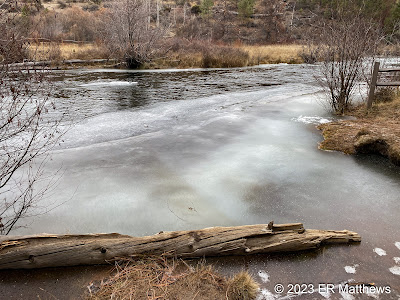I've been looking for an excuse to cook a leg of lamb, but that's a lot of meat for two people, so I needed to wait for a group dinner to prepare one. I decided to cook one (the smallest leg that I could find) just recently when Ann invited Andreas and Michelle over for dinner, along with mutual friend Erika.
 |
| Michelle, Ann, Erika, and Andreas |
 |
It Would Be Rude to Start Without Sparkling Wine
Crémant d'Alsace |
 |
| It's Almost Thanksgiving! |
Ann and I started coming up with ideas for a menu based around leg of lamb a few days beforehand. When I learned that Erika is a vegetarian, I wanted to make a side for the lamb that would stand in as a great vegetarian entrée. Given that I was thinking about a classic Italian marinade for the lamb, why not continue with the Italian theme, such as cannellini in the style of pasta fagioli? That's some classic, home-style comfort food and perfect for a cold, pre-Thanksgiving evening.
Ann wanted to make an appetizer too but we never did settle on anything. I thought I might make some small risotto cakes, but I heard her mention something about stuffed dates in her musings. And so I resolved that if I could find them at the store, I would bring them to her. Luckily, our store has a great selection of bulk foods including dates, so I bought some and a bit of sliced prosciutto. Below you see a photo of Ann's handywork, pitted dates stuffed with goat cheese, some wrapped in prosciutto and some not, roasted in a hot oven for about 10 minutes.
 |
| Prosciutto-Wrapped Dates Stuffed with Goat Cheese |
Back to the leg of lamb. I wanted to roast a leg of lamb in part because I love it, in part because it is something that I cannot serve to every crowd (Dyce, I'm looking at you!), and in part because of the last two dinners with Michelle and Andreas. For those two dinners, Andreas wanted to see cooking in action for the first and for the second, I made a paella, which is pretty much the textbook
à la minute dish, a dish that must be cooked actively just before serving.
What I really wanted was a menu that involved very little last minute cooking and that would let me socialize. I am no longer the chef who stays in the kitchen while the guests socialize and dine. When we invite people to our house, I would rather spend my time with them rather than in the kitchen, a 180-degree departure from my former life as a chef.
The leg of lamb I could butterfly (remove the bone and open up flat like a book) the day before and then marinate by placing it in a plastic bag with a mix of red wine, olive oil, and black pepper, with lots of both garlic and rosemary added for flavor. Then on the night of the dinner, all I would need to do would be to put it on a sheet tray in a hot oven until it reached 125F internal temperature, about 20-25 minutes. After it rested for 20 minutes, then I would slice it, a simple thing that would not take me away from guests. Moreover, I would precook the beans in the afternoon and then while the lamb was resting on the stove top, I could put the beans into the oven to reheat.
 |
| Roasted, Butterflied Leg of Lamb |
The cannellini beans could not be simpler to make and are exactly what I make for pasta fagioli except they have no pancetta (to remain vegetarian) and no pasta (so to remain gluten-free). I started with a soffritto of leeks, carrots, and celery that I sweated in olive oil in an oven-proof pan with a lot of garlic and fresh rosemary. Once the vegetables were soft, I added a couple tablespoons of doppio concentrato tomato paste to a bare spot in the middle of the pan. After the tomato paste caramelized a bit, I deglazed with a slug of white wine, scraping all the brown bits off the bottom of the pan.
Next I added a bit of dried basil and a bunch of stemmed and sliced cavolo nero (Tuscan black kale, easily my favorite kale) along with a bit of water and about five pounds of pre-cooked beans. I let everything simmer for about twenty minutes to bring all the flavors together. Just as the lamb was coming out of the oven, I put a low flame under the beans and drizzled them with great Tuscan olive oil and freshly grated pecorino romano. Into the hot oven they went while the lamb was resting to get warm and delicious.
 |
| Cannellini in the Style of Pasta Fagioli |
 |
| Erika Brought Beautiful Flowers |
Do you know the best thing about leftover leg of lamb? It slices beautifully and makes the best sandwiches, such as the open-face cheesesteaks below. To make them, I sliced the lamb thinly, sliced and wilted an onion, and sliced a block of Tallegio cheese. The bread, I drizzled with olive oil and browned under the broiler and then topped with lamb, onions, and cheese. Into a moderate oven for 10-15 minutes they went to melt the cheese and warm the cold lamb through. Delicious and a great reason to roast a butterflied leg of lamb.
 |
| Open-Face Cheesesteak: Lamb, Onions, and Tallegio |





























































